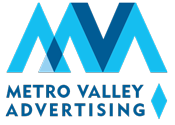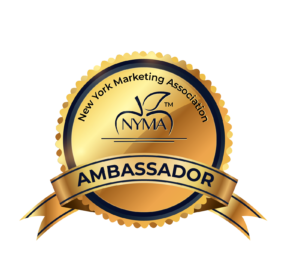When most people talk about advertising their focus is usually on digital. It’s fast, measurable, and everywhere. But smart advertisers know that traditional media still matters in the digital age.
Even in today’s digital world, traditional channels like TV, radio, and billboards deliver results. These platforms reach people in ways that digital ads often can’t. And when paired with digital, they make your media buy stronger and more effective. Let’s explore why traditional advertising still matters and how it helps drive better outcomes.
Different People, Different Screens
It’s easy to think everyone is online. But not all prospects spend their day glued to a screen. And if they do, there are many different platforms to use, and that is important.
Older adults, homeowners, and high-income earners often respond better to traditional ads. They watch live TV, listen to the radio, and notice local billboards. If you skip traditional media, you miss these high-value prospects.
Even younger audiences bounce between digital and traditional channels. Think about how many young adults watch live sports or listen to FM radio on their morning drive. To reach everyone in the buying cycle, you need a mix of both.
Billboards: Big and Bold Awareness Builders
Billboards work. They deliver high impressions at a low cost per view. When placed in the right spots, they create constant exposure.
Outdoor ads are great for targeting specific neighborhoods or areas. You can reach commuters, shoppers, and local residents again and again. That repeated visibility builds trust and recall over time. You can find Out-of-Home advertising almost everywhere.
And Outdoor is popular with younger viewers. Millenials find Outdoor ads to be trustworthy. And Gen Z, the first digitally native generation, are 22% more likely to engage with interactive OOH than the general population.
Billboards also support your digital campaigns. People see your name on the highway, then search for you online. It’s a simple connection that keeps your brand top of mind.
Radio: Driving Website Visits and Action
Radio is still one of the most cost-effective ways to reach people. It hits local audiences, delivers frequency, and builds trust.
People listen in their cars, at work, and while doing errands. That makes radio a great touchpoint during key decision moments. And because it’s live and local, radio often feels more personal. Listeners relate to their favorite DJ’s and feel a connection with their radio stations.
Studies show radio drives online activity. After hearing a radio ad, listeners often visit websites or do a search. So even if the ad doesn’t convert right away, it moves people closer to a sale.
Linear TV: Awareness, Engagement, and Sales
TV isn’t dead. In fact, it still delivers some of the strongest results for brand awareness and engagement.
Linear TV is better known as broadcast and cable TV. It is called linear because all viewers see the same thing at the same time.
Linear TV reaches big audiences fast. It builds trust through sight, sound, and motion. It is the most effective way to tell a story and convey emotion. That kind of impact is hard to match with a display ad or a paid social post.
TV also drives digital behavior. Many people see a TV spot and immediately search the brand online. That makes TV a strong lead generation tool when paired with retargeting or paid search. With a strong call to action, TV creates plenty of conversions on its own.
Traditional Media’s Digital Side
Traditional platforms are evolving. They now offer better tracking and targeting than ever before.
You can buy digital billboards that rotate ads based on time, traffic, or weather. You can run addressable TV that targets households with specific interests. And you can place programmatic radio that adjusts based on listener profiles.
These tools blend the reach of traditional with the precision of digital. That makes your media buy smarter and more efficient. Convergence is the blending of traditional media’s impact with digital media’s data and technology.
Better Together: Combining Traditional and Digital
When you blend traditional and digital, your advertising becomes stronger. It increases reach, frequency, and trust.
Traditional media builds the brand. Digital media drives the action. Together, they support each stage of the customer journey—from awareness to conversion.
For example, imagine running a TV campaign in a metro market. At the same time, you launch a Google Ads campaign and paid social to retarget people who visit your site. Prospects are aware of your product or service through TV. They engage with your company on your website, driven by paid search. And they convert because of paid social ads. This approach increases your touchpoints and improves conversion rates.
The goal isn’t to choose one over the other. It’s to build a media mix that gets results.
Tracking and Attribution Tips
One of the biggest criticisms of traditional advertising is tracking. Many marketers believe they can’t measure it, so they can’t trust it. But that’s no longer true.
Today, there are simple tools to measure traditional media. Use call tracking to monitor phone leads. Use vanity URLs or promo codes to track online behavior. And sync your analytics with flight dates to look for traffic spikes.
The key is to align your metrics with your media. Set clear KPIs before the campaign starts. Then use both digital and traditional tracking to understand performance.
Conclusion: Traditional Media Still Matters in the Digital Age
Traditional media still has incredible power. It builds trust, reaches broad audiences, and supports digital lead generation. When done right, it makes your entire advertising strategy stronger.
As an advertising agency, you need to look at the big picture. A narrow focus on digital leaves gaps. But when you combine traditional and digital channels, you create a complete strategy that performs better. You reach a larger audience with greater frequency. Yes, traditional media still matters in the digital age.
So don’t avoid traditional advertising. Instead, treat it as part of a smarter, more effective media plan. That’s how you get better leads—and better results.



